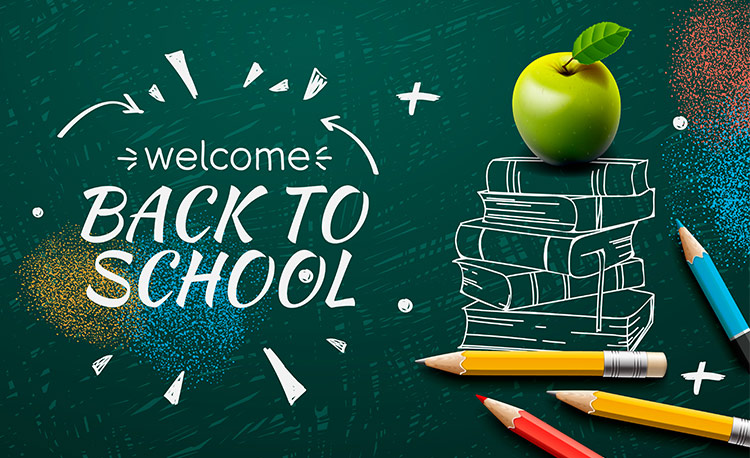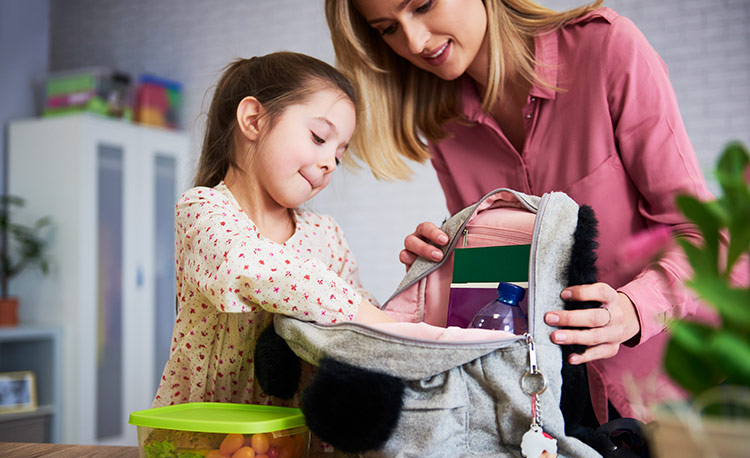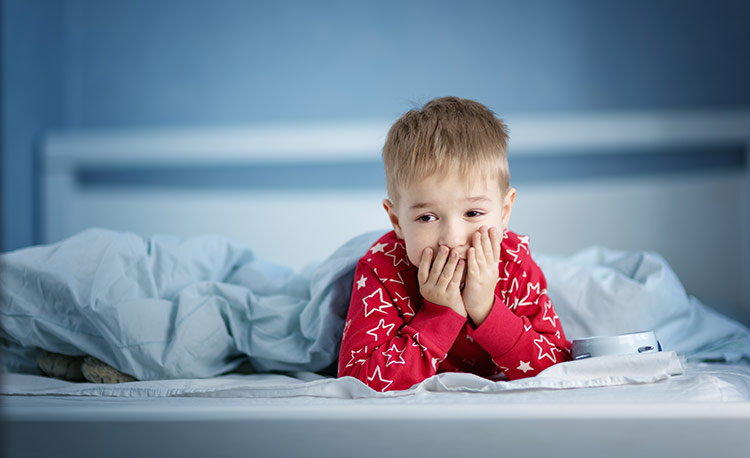Four Best Back to School Routines Using an Autism Visual Schedule
Updated on January 22, 2024
Congratulations! You’ve made it through the height of the pandemic as well as homeschooling. It’s now time to prepare your child to go back into the classroom and resume regularly scheduled programming. When it comes to raising a child with autism and parenting children with special needs, having a solid routine and autism schedule rooted in dependability is what makes all the difference. Our children take cues from us, so trying to stay organized and prepared helps them by helping you.
With the start of the school year soon approaching, now is the best time to start setting up daily routines and autism schedules that will make this back-to-school season easier for everyone. While this is an exciting time, all that excitement for your child could potentially lead to overwhelm if not managed properly.
These four basic routines will help you and your child transition seamlessly from summer, having them back to school ready in no time. Keep in mind that these routines work best when maintained throughout the school year and beyond. They’re even more effective when used with an autism visual schedule and autism visual calendar, which you’ll find great examples of below. It’s also important to seek activities outside of school like autism after-school programs.
1. Morning Routine

There’s no arguing with the reality that morning can often be the most challenging part of the day. On top of the fact that you may have woken up exhausted, you now have to get your child out of bed, fed, dressed, and prepared for the day all before hopefully managing to get them to the school bus on time.
Establishing an autism morning routine is the key to successfully preparing your child for a productive and low-stress day in the classroom. If you’re looking to hack your child’s morning routine for optimal success here are a few ways we can suggest making the most of the precious hours before the start of the day.
Set your alarm 15 minutes earlier
If there was an autism schedule golden rule for parents, it would be this one. Do not underestimate the power of an extra 15 minutes in the morning. The extra time will make you calmer, in turn making your kid calmer. You’ll be able to run through your child’s autism morning routine at a relaxed pace setting them up for a successful day at school.
Don’t Skip Breakfast!
We know, this sounds cliché, but without the right fuel you’ll be setting your child up for failure as there’s no way they’ll be able to function without a nutritious meal eaten at a slow pace.
Pick out clothes the night before
Make it a habit to choose and layout your children’s clothing for the next day before putting them to bed. Doing this the night before will eliminate another step in the morning and avoid a potential argument over which t-shirt or sweater they want to wear. Giving your child the opportunity to make this decision on their own empowers them as well as encourages healthy decision-making. This will also provide you with insight into what they prefer, and may even lead to more positive behaviors related to dressing. Keep in mind, if there’s a yellow sweater your child is attached to, be sure to buy several so they will always have a clean yellow sweater to wear when they desire.
Use visual aids
An invaluable tool when raising a child with autism is to create an autism visual schedule. Because individuals with special needs have difficulty sequencing, using pictures and symbols to lay out what will be done each morning will prepare your child for independence. An aid we can recommend is an autism visual schedule. This is a schedule made up of clear visual signs of what your child can expect throughout part of the morning that will give them structure. When an autistic child has too many choices and not enough structure it’s usually not long until the inevitable meltdown ensues. By using an autism visual schedule, you can customize your morning routines to be as specific or general as is comfortable. While some kids will be able to use a more general layout, others may need each activity to be sequenced into small steps. In the case that your child is overwhelmed by the pictures on the schedule, try presenting them with a short video clip that demonstrates the steps of each task. Visual aids, along with other autism services, can be created at home or purchased online like this one from schKIDules.
2. Autism after school routine
Just as important as an autism morning routine is how you transition them into post-school act ivies. After-school meltdowns are a common occurrence, especially for autistic children, but making sure you have an autism after-school program or routine in place can greatly reduce the severity and likeliness of these episodes. It’s important to keep in mind that there are tons of micro-transitions involved when coming back home after a full day in a classroom, but these after-school activities are a great way to calm your child while making these transitions.
Be ready for a calming activity
On the ride home from school( if you’re not bringing them to an autism after-school program), plan an activity for your child that’s soothing and calming. This will vary depending on their preferences, but it should be based on the things they usually gravitate towards when trying to stay calm and relax. A few examples we recommend are listening to soft music, watching their favorite short video clip, using a calming toy, or really anything that works to soothe your child when they’re in distress. Whatever it is that works for your child, it will give them adequate time to wind down, rest, and recover from the many micro-transitions they’ve faced at the end of a long school day.
-Grab a snack or run a bath Once your child is calm the next thing you’re going to want to do is to make sure that their basic needs are met which may be eating, bathing, or even using the bathroom. None of us are at our best when we’re tired, hungry, or cranky so to avoid meltdowns make sure to offer them a nutritious snack, a warm bubble bath, or even a trip to the bathroom. Being attentive to these simple things will make all the difference.
-But first, Sensory activities! If you’ve followed along up to this point then your child is likely to calm from the initial transition, with their basic needs met, but you still have homework to do and the rest of the evening to continue with. Incorporating a sensory activity before homework will help them to get focused even before sitting down with their assignments. Now, you don’t need any specific kind of fancy toy or sensory bin, just go with what already works. All kids will have a different response to certain sensory tools so it’s best to just stick with what has proven to be successful in the past.
3. Hygiene and bathroom routine
Teaching your children to develop good personal hygiene habits is often a challenge for parents everywhere are having to struggle with on a daily basis. Helping your child to Develop these skills are not only vital to your child’s health, but may also help them to be more accepted socially by classmates and people you know in your close community. Creating a hygiene routine and autism bathroom schedule is imperative when it comes to developing these habits. If you create a routine for your child, they’ll always know what to expect next, and these new tasks will become an expected part of their daily activities. Similarly, you can create a visual schedule as part of a daily autism visual calendar or schedule, or as a separate schedule that is just for their hygiene and bathroom-related tasks. This will allow your child over time to know what’s expected and when they’ll be all done with their self-grooming and hygiene tasks. Here are a few ways you can help your child develop a good personal hygiene and bathroom routine.
Take it one step at a time
When it comes to autism and hygiene, breaking each task down into smaller steps will teach your children how to accomplish them independently. This is also meant to aid them in overcoming potentially triggering stimuli like the sound of the water, smells of toothpaste or soap, and textures of towels or brushes.
Make it a story
Creating a story that uses words, pictures, or drawings to outline each step involved in a task is another helpful way to make this easier for them. Have your child review the story before beginning the task.
Rewards
Reinforcement is key when it comes to autism and hygiene and helping your child develop these skills. Whether it be a physical object or special praise, rewarding your child when they’ve done a good job is extremely beneficial. In the beginning stages, you can give out rewards in-between the steps of each completed task. As your child grows more independent and competent, you can give them a reward after each task is completed.
Don’t forget to have fun!
Do your best to show how good hygiene can be fun! There are many autism services and companies that make special kinds of toothpaste, novelty toothbrushes, as well as fun bath toys that can make each bath time task something fun to look forward to. When they do a good job or initiate a task, follow up with a lot of happy praise towards your child let them know you’re proud!
4. Autism Bedtime Routine

A good autism bedtime routine is essential for anyone to get a good night’s rest, but for an autistic child with a busy school day ahead, it could mean the difference between a day of meltdowns or a day that breezes by. Here are a few ways we recommend making sure your child gets the quality rest they need before heading back to school with these autism bedtime routine tips
Predictability is key
The main aspect of any successful routine for an autistic child is predictability. Establish familiar patterns with soothing activities for your child, prompting them to become calm and relax before bedtime. Your child’s routine should begin anywhere from 15 to 30 minutes before their bedtime and take place in your child’s bedroom where it is familiar and quiet. One way to keep things stable is to read the same book each night or sing your child’s favorite lullaby.
Create a calming environment
Being that children with autism are sensitive to noises or light, you may want to pay extra attention to the small details of their room and sleeping environment. Your child’s room should not be too hot or too cold. It’s also best to have silence or a consistent, low, and quiet soothing noise like a ceiling fan or white noise machine. Lighting is another important aspect of your child’s sleep environment to consider. Their room should be dark enough as to not distract them, with a little light from a night light in case of an emergency.
Practice during the day for good sleep at night
Behaviors and activities that your child has during the day may be affecting your child’s ability to sleep through the night. One example is exercise. If your child is very active during the day it will likely help your child fall asleep and have a deeper sleep when bedtime rolls around. Any exercise should be scheduled for the morning or mid-day, avoiding evenings if possible. It’s also best to keep nap times on a specific schedule, avoiding napping in the second half of their day.
Now that you have all the information to formulate and incorporate an autism schedule for the back-to-school season it’s time to put it into practice. Incorporating this back-to-school routine now will give your child ample time to adjust before their big day. They’ll have enough of a transition going back to school alone, let alone a whole new routine. Introducing these routines and steps slowly will be vital to you and your child’s success navigating the new year.
Get peace of mind from AngelSense, the groundbreaking AI-based assistive technology designed to enhance safety and peace of mind for individuals with special needs and their families. Our solution ensures you stay connected with your loved ones, empowering a higher level of independence while maintaining safety. Learn more about how AngelSense can make a difference for your family.

